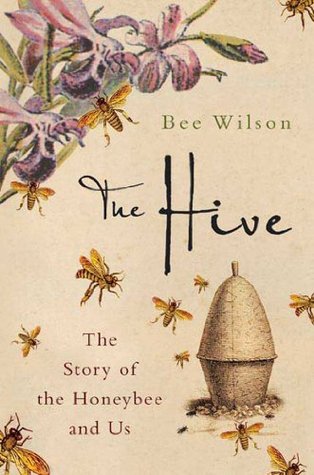Kindle Notes & Highlights
by
Bee Wilson
Read between
September 27 - October 14, 2017
Honeybees, like white men, were not native to the lands that would later become the United States of America,
For the native American Indians, bees were soon synonymous with the baneful effects of European civilization. They called the bee the ‘white man’s fly’, and saw it as the harbinger of misfortune.
You might argue that this in itself – the American dream of prospering through work – is the real delusion. For those at the very bottom of the pay scale, labour brings not ‘treasure’ but poor health, lack of respect and misery.
It has been described as ‘a geometric fact’ that when regular hexagons are used to fill a circular figure the largest possible part of the space is thus utilized.
The bee-rental business began in a New Jersey apple orchard in 1909.
Who owned the honey in a tree? This was a problem which vexed Roman lawyers. Some said that the honey was owned by whoever owned the tree. Others disagreed, arguing that bees in a trunk were just like birds on a branch – not owned by anyone.
For Roman lawyers, there were two basic categories of animal: wild animals (such as lions or tigers) and domestic or tame animals (such as cows and dogs). Bees did not fit easily into either of these categories.
How is this possible? The first thing to acknowledge is that the plausibility of bugonia went with a general belief in spontaneous generation – a belief which was not challenged by science until later in the seventeenth century, and which actually recurred in various forms until well into the twentieth century. Spontaneous generation meant that living beings could be created from nonliving matter. It was a common assumption, for example, that if you left pieces of cheese wrapped in rags in the corner of a dark room you could actually generate new mice, their lives springing from the cheese
...more
While their enclosure of rotting oxen was a ‘preposterous’ way to go about obtaining bees, it was a ‘perfectly rational’ way to produce an altogether different insect, the Eristalis tenax. This insect, commonly called the drone-fly, lays its eggs on putrescent animals and, crucially, looks remarkably like a honeybee in colour, shape and ‘hairy clothing’, the main difference being that it has only two wings to the honeybee’s four.
Additionally, the Drone Fly has a large set of round compound eyes, whereas the honey bee has angular eyes set into a triangular face.
These flies are present in tremendous numbers on the dairy farm I work at, and I can easily believe they come from dead bovines (or their other leavings).
Certainly the bees provide a very curious and not very encouraging model for adolescent love – one in which all the boys want to sleep with a single girl, but the only ones who manage to do so are castrated and killed in their moment of success, while everyone else dies a virgin.
As early as 5,500 years ago, in the time of the First Dynasty of pharaohs, the bee was a hieroglyph meaning both ‘Egypt’ and ‘King’.
Honey is really regurgitated nectar transformed by enzymes (chiefly invertase) in the bees’ glands into an ‘invert’ solution, then evaporated in the wax cells through a fanning action into a concentrated syrup. This is the real ‘secret’ of honey: enzyme action and hard work.3 Nectar is a more or less watery solution of sugars which vary depending on the flower involved but which always include sucrose. The bees use the enzymes produced by their hypopharyngeal glands to convert this sucrose into glucose and fructose, then condense them into a supersaturated solution which keeps well and packs
...more
By the time of Apicius, whose so-called ‘first cookbook’ came out of Rome in the first century AD,
own. Humans learned how to make mead before they learned how to plant seeds or keep animals.
The Romans had numerous different categories of mead: hydromel (a weak mead), omphacomel (made with grape juice), rhodomel (made with roses) and oxymel (made with vinegar and salt). Hydromel, according to Pliny, was made by mixing three parts rainwater to one part honey, and leaving in the sun for forty days at the rising of the Dog Star.29 As well as making you drunk, this hydromel was supposed to cure small-mindedness.
But most people agreed that the finest honey came from the Attic bees of Mount Hymettus, near Athens.
Kodafa Drenched in Honey This Middle Eastern cheesecake seems not unlike the ancient Greek cheesecakes steeped in honey mentioned by poets. It is rather intense, but good if you are in the right mood. Usually it is made with kadif, the shredded-wheat-like pastry, but this version, adapted from Marlena Spieler’s informative The Jewish Heritage Cookbook (London: Lorenz Books 2002), uses couscous, which is easier to get hold of. I have changed some of the quantities slightly from the original recipe, using less cheese and butter.
For the Greeks, they were not just pretty trinkets but symbols of the human soul. The bee was a chthonian animal, or one relating to the underworld – a creature which could somehow carry personality from the world of the living to the world of the dead.14 The disembodied souls of men used the bodies of bees to move about the heavens.
The beekeeper as entrepreneur knew that honey meant money, which entirely went against the old bee-master’s superstition that the products of the hive should never be sold, only bartered.


